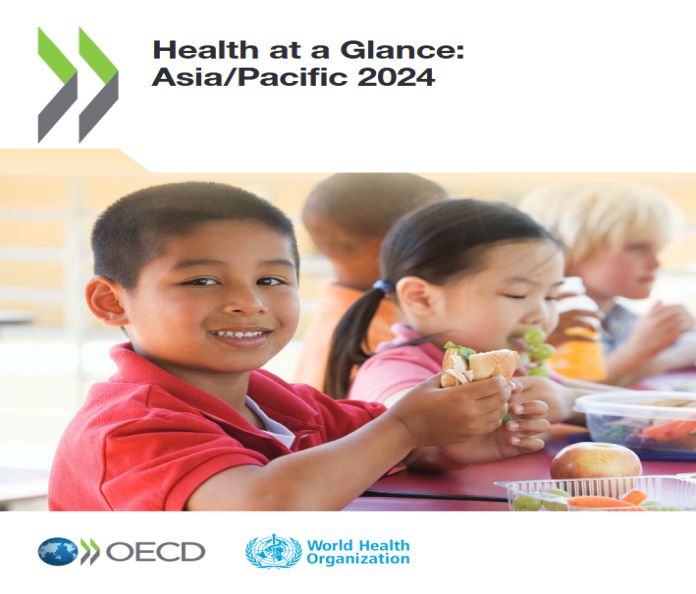- OECD/WHO (2024), Health at a Glance: Asia/Pacific 2024, OECD Publishing, Paris, https://doi.org/10.1787/51fed7e9-en.
Abstract
This eighth edition of Health at a Glance Asia/Pacific presents a set of key indicators of health status, the determinants of health, health care resources and utilisation, health care expenditure and financing and quality of care across 27 Asia-Pacific countries and territories. It also provides a series of dashboards to compare performance across countries and territories, and a thematic analysis on the burden of mental health and neurological conditions in the Asia-Pacific region.
Drawing on a wide range of data sources, it gives readers a clear understanding of the factors that affect the health of populations and the performance of health systems in these countries and territories. Each of the indicators is presented in a user-friendly format, consisting of charts illustrating variations across countries and territories and over time, brief descriptive analyses highlighting the major findings conveyed by the data, and a methodological box on the definition of the indicators and any limitations in data comparability. An annex provides additional information on the demographic and economic context in which health systems operate.
Executive summary
Health at a Glance: Asia/Pacific 2024 presents key indicators on health status, determinants of health, healthcare resources and utilisation, health expenditure and financing, and quality of care for 27 Asia-Pacific countries and territories. Countries and territories in the Asia-Pacific region are diverse, and their health issues and health systems often differ. However, these indicators provide a concise overview of the progress of countries towards achieving universal health coverage for their population.
Mental, neurological, and substance use disorders and self-harm (MNSS) place a significant burden on the population in the Asia-Pacific region
In 2021, these conditions accounted for a quarter of the non-fatal disease burden (as measured by years lived with disability (YLDs)), exceeding the impact of communicable diseases and maternal health issues. In 2021, depressive disorders posed the largest burden of all MNSS conditions, followed by migraine, anxiety disorders, and schizophrenia, which together made up over two‑thirds of the years lived with disability in the region.
Since 2010, life expectancy at birth has increased by about three years in low- and lower-middle‑income countries and by two years in upper-middle‑ and high-income countries
Yet, a very large regional divide persists as, on average in 2023, a newborn in high-income countries is expected to live over 10 years more than a newborn in low- and lower-middle‑income countries. This can be linked to important disparities observed within countries in neonatal, infant, and under age 5 mortality, with households in the highest income quintile and mothers with higher education generally having lower child mortality rates than those in the lowest income quintile and mothers with no education, respectively.
Many countries experienced a decrease in household out-of-pocket spending as a share of health expenditure
The largest decreases in out-of-pocket spending took place in low- and lower-middle‑income countries. However, in some of these countries, OOP spending still accounts for more than half of what is being spent on health.
Countries and territories could do more to promote prevention and early diagnosis of cancer
With regards to breast cancer, incidence rates are still lower in most countries and territories in Asia-Pacific than the OECD average, but mortality rates are higher in countries and territories in Asia-Pacific than the OECD average. This is at least partly related to low mammography screening uptake in Asia-Pacific, leading to delayed diagnosis and treatment among high-risk women. Concerning cervical cancer, although an increasing number of countries and territories in Asia-Pacific have introduced an HPV vaccination programme, incidence rates are still high in most countries and territories in Asia-Pacific and mortality rates are high in low-, lower-middle‑ and upper-middle‑income countries and territories in the region. To reduce the burden of cervical cancer, beside HPV vaccination programmes, countries and territories in Asia Pacific could introduce or strengthen cervical cancer screening programmes.







